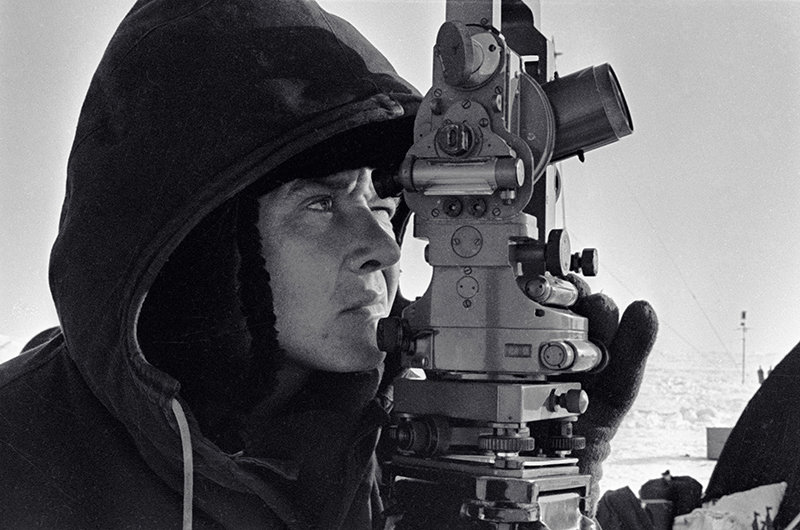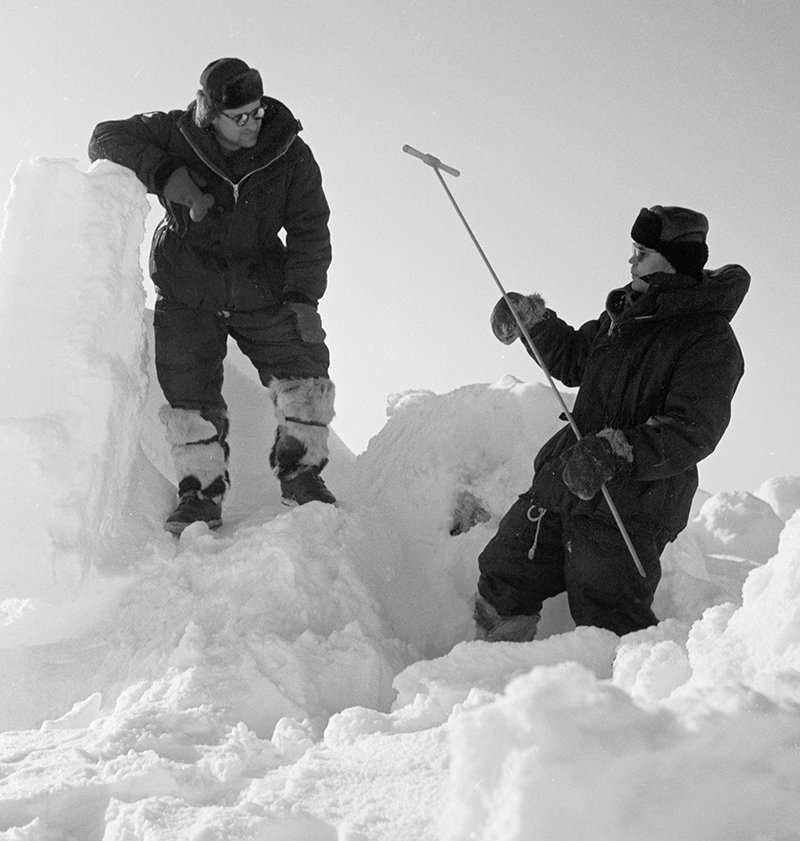We were supposed to continue our work on North Pole-8 but nature made its own decisions. The station was destroyed by the elements, and we were forced to evacuate the people and instruments. A decision was made to build a new drifting station — North Pole-11.
We flew from Leningrad on a quiet spring evening on March 31, 1962 and arrived at Tiksi the next day. It was winter and blizzards were raging. The temperature was about —30°C, but the sun was shining brighter and longer every day as the polar day was approaching. We decided to build a new station to the north of Wrangel Island where NP-2, NP-4 and NP-8 started. Ice from the eastern sector is drifting to the Greenland Sea as the circumpolar region rotates clockwise.
We found a suitable ice floe on April 13 and flew there with the basic necessities. We saw an endless ice desert from the plane: ice covered by snow, disorderly twists of old hummocks with fresh bluish-green ice piles in some places. Dark cracks and black spots of open water flickered below. Finally we saw our ice floe. Against the snow background we could clearly see the tents, the An-2 aircraft and the landing strip marked with small red and black flags. The sun was sending its last rays as the evening was drawing in.
First thing in the morning we attentively inspected the ice floe. It was an MYI floe. The landing strip was located on shore ice — even year-old ice. It was 140 cm thick and was covered with snow. This was an excellent natural runway. There were ice drifts up to five meters high on one side of the runway and fresh ice and ice leads on the other
April 17 was a sunny day, and I defined the coordinates of the station: latitude 77°10' N, longitude 165°58' W. We had to build a camp as quickly as possible. The radio operators were efficient: they had already equipped the radio station and contacted the mainland. Our NP-11 went on-air, transmitting regular weather reports and our coordinates.
On May 1 all of us gathered near a snow rostrum at 10 am local time (2 pm Moscow time). We had a short meeting and gave a gun salute from carbines and signal pistols. Our fatigue was gone and all of us were in a good mood. We received many greeting messages from our families, friends and colleagues.
The official opening of the NP-11 station took place on May 5, 1962, exactly 25 years after the construction of NP-1, the world's first drifting station.


